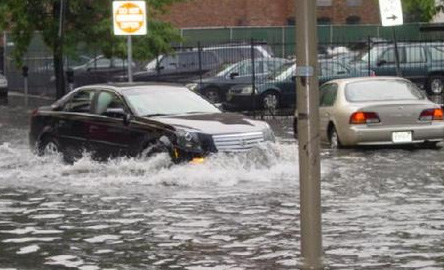"Flood is perhaps the most challenging [catastrophe risk] to model," said Matthew Jones, head of catastrophe management, global underwriting, for Zurich Insurance Group.
"In general, they are not performing very well," Alex Poracchia, a partner with Deloitte, said of flood models.
Poracchia said historical knowledge of flooding lags that in such areas as earthquake and hurricane. Floods can take a number of very different forms: coastal, flash, river, and even "secondary event," he said, adding the thinness of the flood knowledge base means flood models are "not necessarily driven by a set of consistent and standard risk factors."
Jones cited the need to capture disparate flood-related information, ranging from atmospheric conditions and topography to construction standards.
"Just a few centimeters in height can make the difference between a property flooding or not," he said in an email.
Poracchia points to recent experience in Thailand and Australia as evidence of the destructiveness of floods. The causes of floods have a large, and unpredictable, human element: "where we decide to live, how we decide to construct," he said. "So that is a risk that in essence is evolving."
It has become common for clients to use more than one model, said James Webb, product marketing leader for catastrophe modeler Eqecat.
"No one model is perfect," Webb said, noting the very precise expectations of Solvency II in the European Union. "Customers require more and more to get a complex, multidimensional view of risk to help manage that uncertainty."
Eqecat's customers, Webb said, are largely "insurance entities" -- insurers, reinsurers, brokers that need to reduce uncertainty.
Adam Podlaha, head of impact forecasting international at reinsurance broker Aon Benfield, also said users of models have begun to realize it is a mistake to rely on just one. He spoke in an interview at a recent London seminar hosted by the broker on wind risk.
One of the main risks associated with flooding, Webb suggested, is an underestimation of the exposure.
After a catastrophe, Eqecat will look closely at the economic loss and the losses suffered by its clients. It seeks to improve its models, Webb said, through the steady accumulation of data on hazards and exposures.
"Floods have this capacity to create surprisingly large losses," Webb said. "You need only to look at what's happened in Thailand to see this. So confidence is something risk models can deliver by being sufficiently robust."
The lack of historical data about flooding is matched by the weakness in customer understanding, Poracchia said. This is a holdover, he believes, from the situation a decade ago when people were more focused on wind. The awareness gap has persisted even over the past three to five years as floods have accounted for "an increased proportion of the natural catastrophe losses in the world."
The insurance industry, Poracchia said, needs to put pressure on the model vendors to improve the flood product. He estimated that only 10% of the "peril regions" are related to floods.
He added that the flood risk to an industrial park may depend on where on a hill a factory is located or the level of building standards. "All those factors are not being very well considered right now by the insurance industry," he said.
Poracchia finds a low state of flood risk awareness among personal lines insurance customers. He believes the public availability of flood maps has created a false sense of security.
There is a greater appreciation of flood risk on the commercial side, Poracchia said. Larger businesses, he said, carry out "pertinent and relevant assessments" about where buildings should be sited in relation to such factors as the elevation and the likely behavior of rivers.
Zurich monitors flood risk through maps and models. A 100-year flood map, Jones said, would indicate an area with a flooding risk of 1% or more.
"Flood maps are available for many territories and are an important element in understanding whether a property could be at risk or not," he said.
Jones added floods could emanate from small rivers that do not appear on the maps. And maps, he said, may fail to take sufficient account of how a flood in one jurisdiction can affect another.
One solution, probabilistic catastrophe flood models, "are expensive and complex to build and are only commercially available for a few territories, including the U.K. and Germany," Jones said.
Zurich seeks to establish a "Zurich view" of risk, he said. This means considering such elements as underwriting, pricing, capital assessment and corporate growth strategy. This will involve using flood model information from different providers.
"It is very important to put a significant amount of resource into understanding this risk," Jones said.
Zurich Insurance Co. Ltd. has a current Bests Financi













 Experts on catastrophe models say that of all the potential catastrophe risks, the most difficult to understand may be that of flood.
Experts on catastrophe models say that of all the potential catastrophe risks, the most difficult to understand may be that of flood.